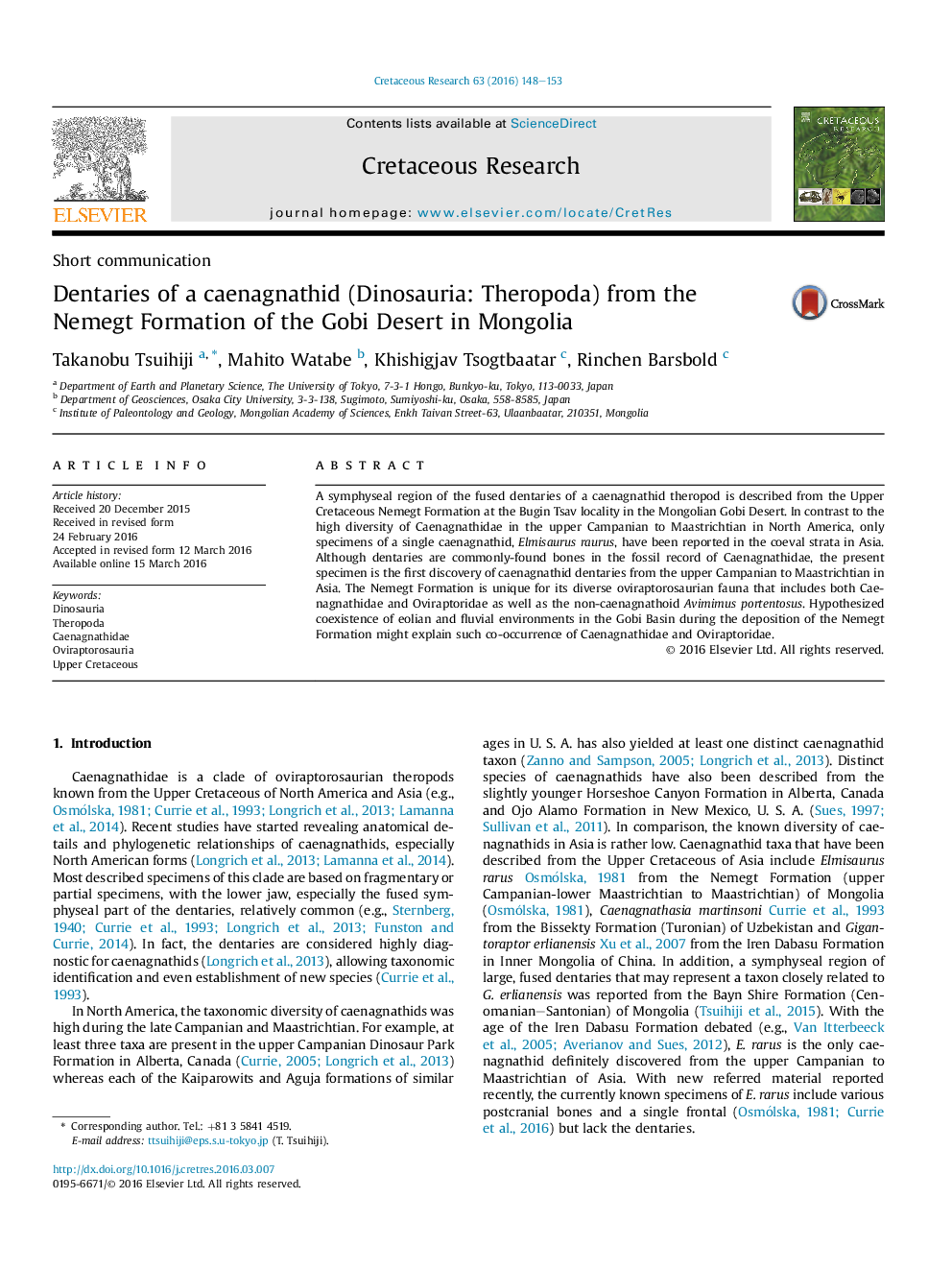| Article ID | Journal | Published Year | Pages | File Type |
|---|---|---|---|---|
| 4746671 | Cretaceous Research | 2016 | 6 Pages |
•A symphyseal region of the fused dentaries of a caenagnathid theropod is reported from the Nemegt Formation in Mongolia.•This represents the first caenagnathid dentaries found from the upper Campanian to Maastrichtian in Asia, in which caenagnathids have rarely been described.•The Nemegt Formation is unique for its diverse oviraptorosaurian fauna including both oviraptorids and caenagnathids. Hypothesized coexistence of eolian and fluvial environments during the deposition of this formation might explain such co-occurrence of the two clades of oviraptorosaurians.
A symphyseal region of the fused dentaries of a caenagnathid theropod is described from the Upper Cretaceous Nemegt Formation at the Bugin Tsav locality in the Mongolian Gobi Desert. In contrast to the high diversity of Caenagnathidae in the upper Campanian to Maastrichtian in North America, only specimens of a single caenagnathid, Elmisaurus raurus, have been reported in the coeval strata in Asia. Although dentaries are commonly-found bones in the fossil record of Caenagnathidae, the present specimen is the first discovery of caenagnathid dentaries from the upper Campanian to Maastrichtian in Asia. The Nemegt Formation is unique for its diverse oviraptorosaurian fauna that includes both Caenagnathidae and Oviraptoridae as well as the non-caenagnathoid Avimimus portentosus. Hypothesized coexistence of eolian and fluvial environments in the Gobi Basin during the deposition of the Nemegt Formation might explain such co-occurrence of Caenagnathidae and Oviraptoridae.
